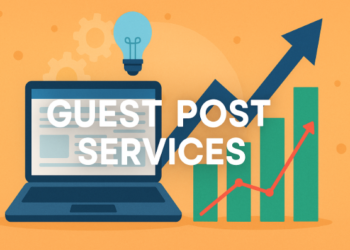If you’ve ever filled out a contact form, downloaded an eBook, or requested a demo on a website, congratulations—you’ve become an inbound lead. But have you ever wondered what really happens next? Where does your information go? Who sees it? What processes begin behind the scenes? This is where the often-mysterious world of Inbound Stories unfolds.
In this article, you’ll find out more about the life cycle of inbound leads, what companies do with them, how they are nurtured, and what really separates a cold inquiry from a qualified sales opportunity. Whether you’re a marketer trying to optimize your funnel or a business owner trying to improve conversion rates, buckle up—because we’re diving deep into the world of inbound leads.
Step 1: You Take Action
The journey begins when you do something on a website that shows interest—like:
- Downloading a free eBook
- Signing up for a newsletter
- Filling out a “Contact Us” form
- Requesting a free demo or trial
These actions tell a company that you’re interested. Your name, email, and other details are captured by their system.
If you want to find out more about how companies collect and use this data, you can check over here for detailed guides.
Step 2: You Get Scored and Sorted
Not every lead is ready to buy. Some are just browsing. So, what does the company do? They use a system to score and sort you.
They look at things like:
- Which pages you visited
- How long you stayed
- What kind of content you looked at
- Your job title or company
This tells them how serious you are. If your score is high, they may send you to the sales team. If not, they’ll keep you in the loop with helpful content until you’re ready.
Step 3: You’re Nurtured
Let’s say you’re interested—but not ready to buy. No problem. You’ll start getting emails with tips, articles, and maybe invites to webinars.
This is called lead nurturing. The goal is to:
- Educate you
- Build trust
- Stay on your radar
Companies don’t want to push you. They want to guide you until you feel ready to move forward.
Want to see how businesses do this effectively? Go right here for real examples and ideas.
Step 4: You’re Contacted by Sales
Once your lead score gets high enough—maybe you visited the pricing page or downloaded a product guide—the marketing team sends your info to the sales team.
But this isn’t a random cold call. Sales reps look at your journey:
- What pages you visited
- What you downloaded
- What problems you might be trying to solve
So when they reach out, they already know what you’re interested in. The conversation is more helpful, more personal, and less pushy.
Step 5: You Become a Customer
If everything lines up, you decide to buy. You go from lead to customer. Success!
But the story doesn’t end here. Smart companies keep in touch:
- They offer training or onboarding
- They check in to make sure you’re happy
- They send updates or invite you to events
They want to keep you engaged and maybe even turn you into a loyal fan who refers others.
Why These Inbound Stories Matter
Today, people don’t like being sold to. They want to research, explore, and decide on their own time. Inbound marketing is built for this. It helps companies:
- Attract the right people
- Build trust
- Convert leads into long-term customers
Your journey as an inbound lead is designed to feel natural, not forced. And if you’re a business, understanding these Inbound Stories helps you create better experiences for your leads.
Tips for Businesses Managing Inbound Leads
If you’re a marketer or business owner, here are some quick tips to improve your inbound process:
- Respond fast – Contact leads quickly. The sooner, the better.
- Use lead scoring – Focus your time on the best leads.
- Send helpful content – Stay top of mind without being pushy.
- Align marketing and sales – Make sure both teams are on the same page.
- Keep engaging after the sale – Happy customers lead to referrals.
Want to improve your lead follow-up process? You can check over here for software and tools that make it easier. Or, if you’re just starting, go right here for templates to build your first email sequence.
Final Thoughts: It’s All About the Journey
Every inbound lead has a story—from that first click to becoming a customer. Whether you’re the lead or the business, understanding this journey helps everyone win.
Inbound marketing isn’t about pressure. It’s about value, trust, and timing. The better the experience, the more likely it is to turn interest into action.
Next time you’re on a website and take that first step, remember: you’ve just started your own Inbound Story.





